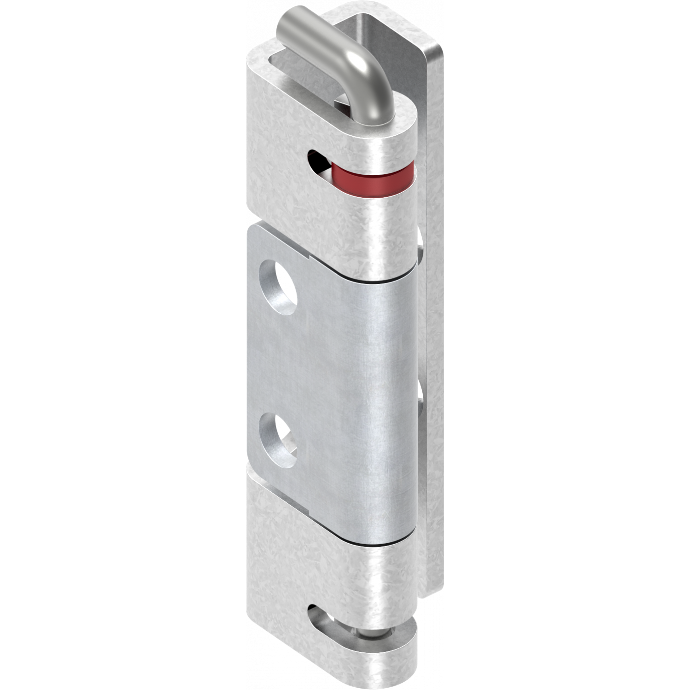Hinges
Here you will find our large selection of hinges for industrial switch cabinet and housing construction for every customer requirement. We offer visible, i.e. external hinges and non-visible, i.e. internal hinges. EMKA hinges can be used for surface-mounted or flush doors on single or modular cabinets with single or double doors. Our hinges are available in numerous materials (stainless steel, steel, GdZn / Zamak or polyamide) and surfaces (chrome-plated, galvanized, polished or black powder-coated).
Loading...
What are hinges?
Hinges are used for the movable connection of components. The hinge allows the two components to be opened and closed in relation to each other at an angle limited by the hinge design and the installation situation. As a rule, one of these components is the frame of a cabinet or housing or a box or chest. The other element to be movably connected to it is a door or flap. The hinge thus forms a joint around which the connected parts can be moved in relation to each other.
How does a hinge work?
Of the two halves of a hinge, one half is attached to the
door and the other half to the housing (e.g. of a cabinet). They are usually
attached by screwing or welding. Another element of a hinge is usually the
hinge pin, which connects the two hinge halves to each other as a fixed axis.
Due to the fixed connection between one hinge half and the door, the door can
also be rotated around the hinge pin and thus enables the door to be opened and
closed in the simplest case in the form of a circular movement.
What types of hinges are there?
Hinges have a variety of distinguishing features. They can
be visible or invisible from the outside, some can be easily separated or
unhinged, others are firmly connected to each other. The type of door design,
whether surface-mounted or internal, also plays a role in selecting the right
hinge.
A distinction is essentially made between the following hinge designs:
· Hinges for surface-mounted doors
· Hinges for flush doors
· Torque hinges
· Adjustable hinges
· Pin hinges
Variety of materials for all requirements
The materials for all hinges are carefully selected to guarantee durability and functionality. The materials used include:
· GD-Zn (die-cast zinc): Economy and robustness
· Steel: Robustness and durability
· Stainless steel: Resistance to corrosion and high strength
· Plastic (polyamide): Lightweight and corrosion resistance
· Aluminum: Low weight, good corrosion resistance and strength
This variety of materials ensures that the hinges function reliably in different environments and under different conditions.
Versatile areas of application for hinges
Hinges are available in a wide variety of designs. There is a suitable hinge for every application and every installation situation. This makes them an important functional element in industrial enclosure and housing construction and they meet a wide range of customer requirements in terms of function, installation space, environmental conditions and reliability.
The 125° Hinge with Captive Pin is a versatile product designed for a variety of applications. Constructed from steel, it is zinc-plated and raw for optimal durability.
The product includes a roller made of mild steel (m.s.), which is raw and suitable for welding on. Identified by the article number 1031-U12, this hinge is part of Program 1031 and is featured on Catalogue Page 4A-135.
Its availability is contingent on specific requests, offering a flexible solution for diverse needs in various industries.

125° Hinge with captive pin,
Steel zinc-plated and raw; 1031-U12

We have the solution!
Contact our product experts in technical sales and
get in touch by e-mail, phone or request a callback.
We'll be pleased to help you!
Product Selection





